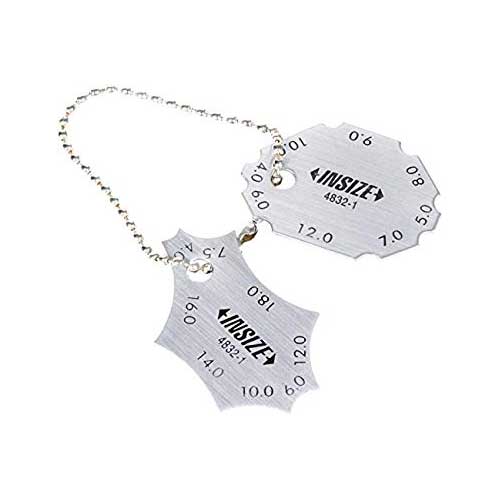Gauge Fillet Weld Basics: Finest Practices and Common Mistakes
Gauge Fillet Weld Basics: Finest Practices and Common Mistakes
Blog Article
The Ultimate Overview to Fillet Weld Quality Assurance: Ensuring Stamina and Sturdiness in Your Welded Joints
In the world of welding, guaranteeing the stamina and sturdiness of fillet welds is vital for the integrity of welded joints. As we embark on this exploration of fillet weld top quality control, we will discover vital factors that affect weld stamina, delve right into efficient evaluation approaches, and talk about methods for protecting against usual weld defects.
Importance of Fillet Weld Quality Assurance
Making certain appropriate fillet weld quality control is paramount in ensuring the structural stability and longevity of welded components in numerous industries. Fillet welds are generally used in structural steelwork, bridges, stress vessels, pipes, and other essential framework where the stamina of the weld is critical to total safety and security and efficiency. Quality assurance procedures such as aesthetic evaluations, non-destructive testing, and adherence to welding procedures assist determine prospective issues like absence of combination, insufficient infiltration, undercutting, or extreme support.
Key Aspects Influencing Weld Toughness
Achieving optimal weld toughness needs mindful consideration of different crucial aspects that affect the stability and resilience of the welded joint. The initial vital factor appertains joint preparation, which includes cleansing the base metals to eliminate any impurities that might weaken the weld. Additionally, the fit-up of the joint is necessary to guarantee proper penetration and fusion of the filler material.
The option of the suitable welding strategy and specifications additionally plays a significant duty in establishing weld strength. Factors such as warmth input, traveling speed, and electrode angle can influence the high quality of the weld. Maintaining the correct interpass temperature throughout multi-pass welding is essential to prevent breaking and make sure a solid bond between the layers.
Furthermore, the option of filler material and its compatibility with the base steels is critical for achieving high weld stamina. Utilizing filler product with the suitable mechanical properties can enhance the overall stability of the weld. Lastly, post-weld warm therapy and proper evaluation techniques are necessary action in making certain the stamina and resilience of the bonded joint.
Inspection Techniques for Weld Stability

One more critical examination method is fluid penetrant screening, where a fluid color is related to the weld surface - Gauge Fillet Weld. The dye seeps into any kind of surface-breaking problems, making them noticeable under UV light. This technique is reliable for spotting imperfections that may not show up to the nude eye


Ultrasonic testing is likewise widely used for inspecting weld integrity. High-frequency acoustic wave are directed right into the weld, and any disturbances in the audio wave pattern indicate potential defects like cracks or lack of fusion.
These evaluation methods play an important duty in ensuring the top quality and dependability of welds, ultimately adding to the total stamina and sturdiness of welded joints in commercial setups.
Stopping Common Weld Issues
In you can try these out order to preserve the structural honesty of bonded joints in commercial applications, it is crucial to apply precautionary procedures to deal with usual weld problems. One typical flaw is absence of fusion, where the filler material falls short to bond adequately with the base steels, resulting in weak places in the weld. This can be protected against by making certain proper heat control and making use of the appropriate welding technique.
One more regular concern is porosity, caused by gas entrapment in the weld steel throughout the welding process. To about his stop this, it is important to clean up the base metals completely, make use of completely dry electrodes, and keep an appropriate welding atmosphere with proper air flow.
Furthermore, cracks in welds can endanger the joint's strength. To prevent this issue, it is very important to manage the cooling rate after welding, use preheating when required, and select appropriate welding parameters.
Enhancing Bonded Sturdiness With Proper Methods
One essential technique to enhance weld durability is to guarantee appropriate weld bead positioning. By placing the weld bead precisely within the joint, the weld's toughness and resistance to exhaustion can be considerably boosted.
Selecting the best filler steel and making sure the cleanliness of the base steels can prevent incorporations and other defects that might endanger the weld's resilience. By implementing these appropriate methods, welders can ensure that their welded joints show extraordinary strength and sturdiness, meeting the greatest quality requirements.
Conclusion
In verdict, keeping premium quality control requirements for fillet welds is important for ensuring the toughness and durability of bonded joints. By understanding the key variables affecting weld strength, using evaluation techniques for weld integrity, preventing usual weld problems, and utilizing correct strategies, welders can enhance the total durability of their welds. It is imperative to prioritize top quality control procedures to create reputable and durable welded joints.
In the world of welding, guaranteeing the stamina and resilience of fillet welds is paramount for the honesty of bonded joints. As we begin on this exploration of fillet weld quality control, we will certainly discover vital elements that influence weld stamina, delve right into effective evaluation approaches, and go over methods for stopping common weld problems.Accomplishing ideal weld stamina needs mindful consideration of various essential variables that influence the honesty and resilience of the welded joint (Gauge Fillet Weld).In conclusion, keeping high top quality control criteria for fillet welds is critical for ensuring the toughness and durability of bonded joints. By comprehending the key aspects influencing weld toughness, utilizing evaluation approaches for weld stability, protecting against typical weld defects, and utilizing correct strategies, welders can enhance the general durability of their welds
Report this page